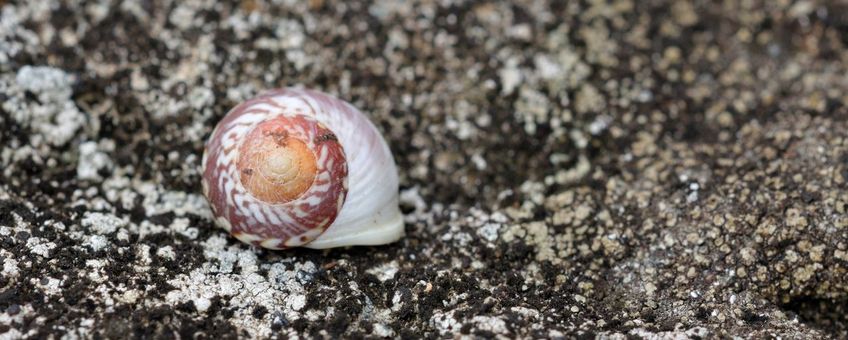
Disappearance of Sint Maarten’s snails
Dutch Caribbean Nature Alliance (DCNA)About 49 species of mollusks (namely clams and snails) have been documented on Sint Maarten. Depending on which list you use, 15 or 16 are endangered, representing about a third of the island’s mollusk populations. Unfortunately, too little research has been done on these mollusks to make definitive conclusions, but it appears that four species may have already been lost, including the Apple Snail (Pomacea glauca), Marbled Physa (Aplexa marmorata), Glabrous Ramshorn (Biomphalaria glabatra) and Mottled Fingernail Clam (Eupera viridans). The terrestrial snails Pupiform Mountain Snail (Chondropoma pupiforme), Striped Helicinid (Helicina fasciata), Transparant Bulimulus (Bulimulus diaphanous fraterculus) and some more species are endangered on Sint Maarten.
Critical Habitats
The main causes of the decline in populations include habitat loss due to hurricanes, pollution and construction. In fact, the island has almost no primary (or original) forest left. Secondary forest is restored forest where, in addition to indigenous species of plants and animals, there are often many introduced exotic species which can bring about a number of other issues for the island.
One particularly vulnerable habitat is forest with calcareous moist soil. On the Dutch side of the island, this habitat is mainly found at Billy Folly, where only a limited piece of original habitat is still present. Nearly the entire 'mountain' has now been built up with houses. During the 2021 visit, a road was built right through the primary forest. This road will likely lead to new construction projects, which could result in the disappearance of the last remnant of forest causing the loss of any snail species bound to this area.

Another disappearing habitat is moist secondary forest on neutral soil. This habitat is mainly found on the French part around Paradise Peak. This habitat is scarce but not threatened because there are no building plans on and around Paradise Peak. On the Dutch side it is found on Sentry Hill and Sint Peter Hill.
Importance of snails
These snails represent an important part of the natural balance for the island. They consume rotting leaf litter and fungi and can help recycle nutrients in the soil. In addition, they provide food source to a number of mammals, birds, reptiles and even insects, helping convert nutrients found in the soil to a digestible food source for larger predators. A healthy environment for Sint Maarten starts in the soil, so understanding and preserving these tiny island inhabitants will be critical in protecting the island’s delicate ecological balance.
Report your sightings

Species reports by local communities and tourists are invaluable for nature conservation efforts to help increase public awareness and overall species protection. Besides, DCNA, Observation International and Naturalis Biodiversity Center are working together to develop on automated species identification app for your phone. Your uploaded photos are of great value to make this possible. For questions, please contact research@DCNAnature.org.
More information
- You can find the completed list of land and freshwater mollusks documented during this study on the Dutch Caribbean Biodiversity Database
Text: Tineke van Bussel, Dutch Caribbean Nature Alliance (DCNA)
Photos: Christian König, SHAPE/DCNA (lead photo: Striped Helicinid (Helicina fasciata)); Tello Neckheim
